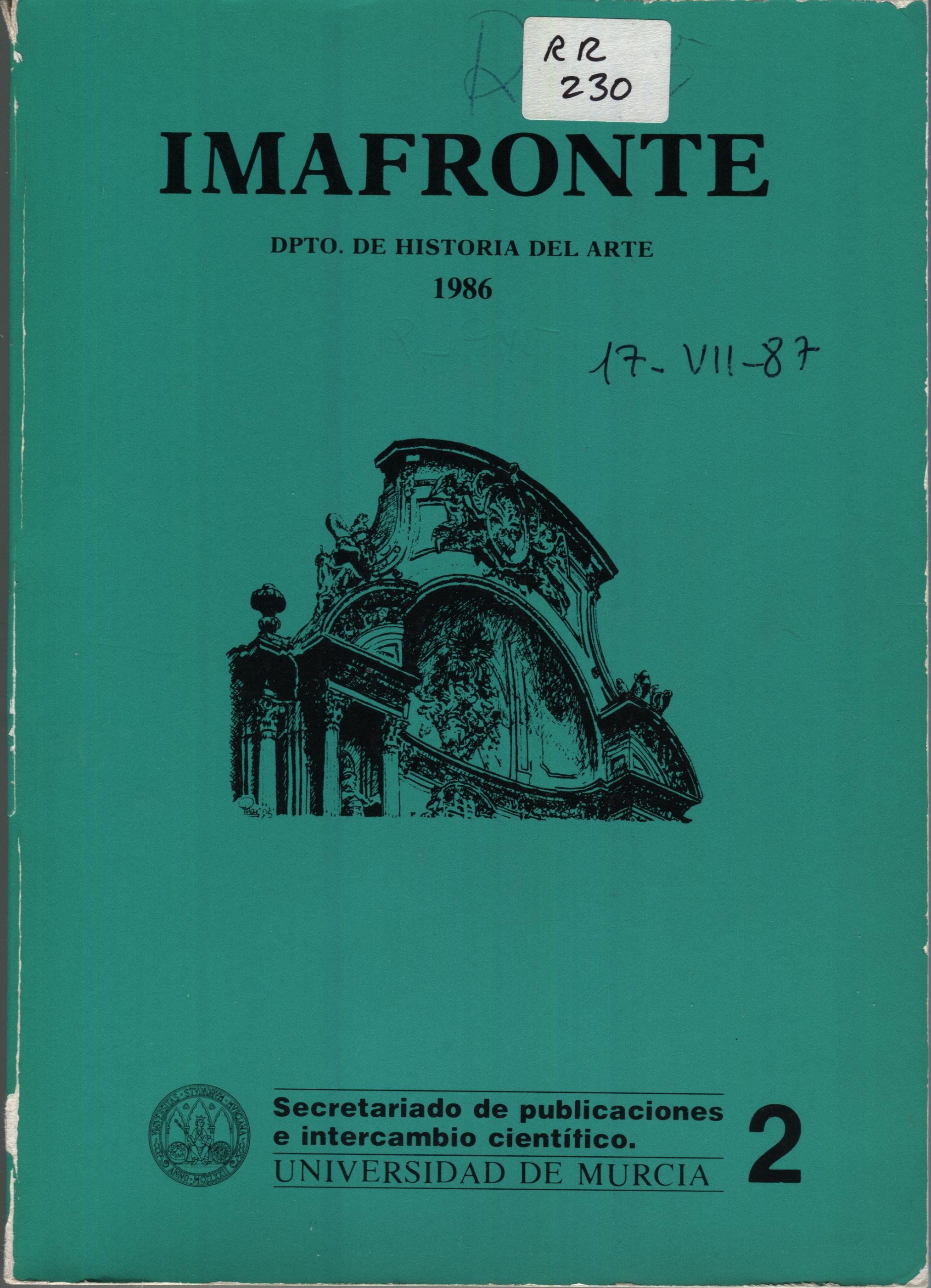FUENTES ICONOGRÁFICAS Y DE INSPIRACIÓN EN LA ESCULTURA DE FRANCÍSCO SALZILLO
Abstract
This paper tries to make know some stylistic and iconographic foundations of the Spanish sculptor of religious images F. Salzillo, who has traditionally been considered an artistic isolated in time and space from the rest of the sculptors of his time. The analysis new attempted explores the sources of inspiration, te orign of wich goes back to engravings of the XVIth century, and in general, to baroque paintings of the ensaing century. The Humanae Salutis Monumenta by Benito Arias Montano is one of the most important sources considered, because of the nearness between certain models of Salzillo's Passion repertory and the engravings accomplished to illustrate the work of Philip II's librarian. This theme (The Agony in the Garden) is the most important nucleus of the whole work and its connection with the Fleming and Dutch paintings of the XVIIth and XVIIIth centuries. The true interpretes of the dramatic sense gleaned from the Gospel of St. Matthew in that passage. Together with them, the echo of these influences in Mengs or D. Tiepolo collect with sufficient accuracy the effect those sources had on works carried out for Spain. This study advances in the internationalization of Salzillo's iconographic sources. he is connected with the Italian sculpture of his time and, in general, he is considered a perfect expert pf the Spanish and European artistic armosphere of the XVIIth and XVIIIth centuries.Downloads
-
Abstract518
-
PDF (Español (España))262
1. The authors non-exclusively assign the exploitation rights (reproduction, distribution, communication and transformation) to the magazine.
2. The works published in this magazine are subject to the Attribution-ShareAlike 4.0 International license (CC By SA 4.0). Therefore, they can be copied, used, disseminated, transmitted and publicly displayed, provided that:
i) the authorship and the original source of its publication (journal, editorial and URL of the work) are cited, thus allowing its recognition.
ii) it is allowed to remix, transform or create from the material while maintaining the same license as the original.

3. Self-archiving conditions. Authors are allowed and encouraged to electronically disseminate the pre-print (version before being evaluated) and/or post-print (version evaluated and accepted for publication) versions of their works before publication, as it favors their publication. Earlier circulation and diffusion and with it a possible increase in its citation and reach among the academic community. Color RoMEO: verde.






















